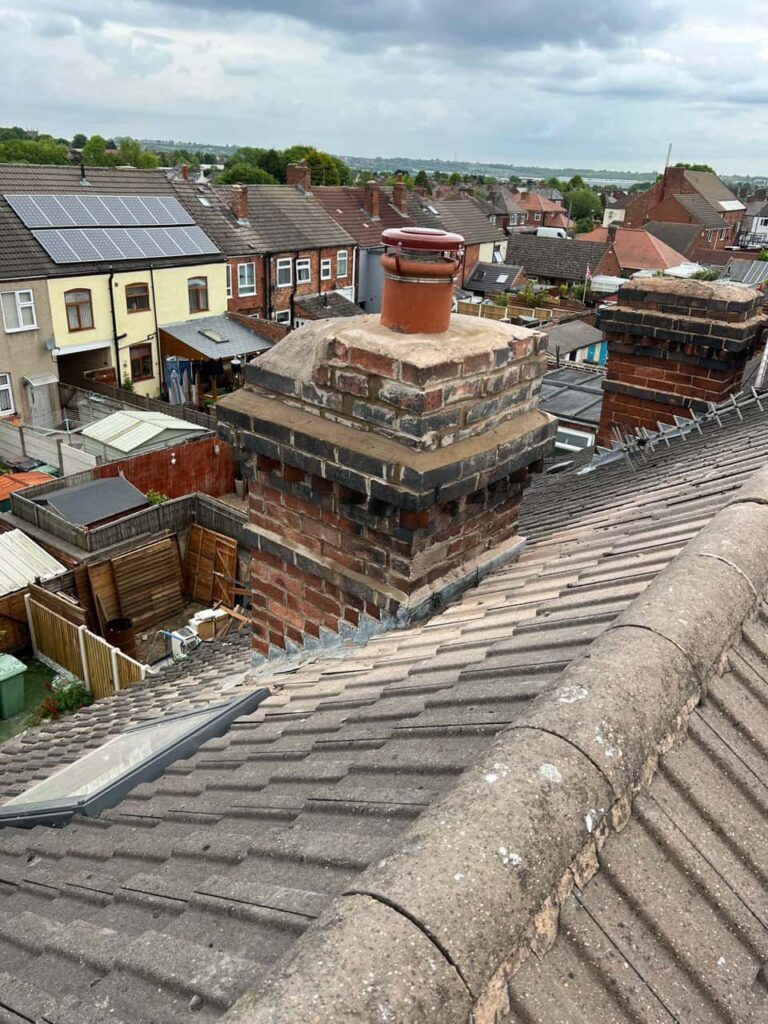Introduction
Older homes have a unique charm and character, but they also come with structural challenges—one of the most common being roof leaks. With years of exposure to the elements, ageing materials, and outdated construction methods, older roofs are more susceptible to water damage. If left unaddressed, roof leaks can lead to costly repairs, damp problems, and structural issues.
At Wednesfield Roofing Repairs, we specialise in diagnosing and fixing roof leaks in Wednesfield, West Midlands, ensuring homes remain safe and weatherproof. This article explores the key reasons why roof leaks are more prevalent in older homes and how regular maintenance can help prevent further damage.
Key Takeaways
- Ageing roofing materials weaken over time, making older roofs more prone to leaks.
- Outdated construction methods and materials may not provide the same durability as modern roofing systems.
- Weather exposure causes gradual deterioration, leading to cracks and water ingress.
- Poor ventilation and insulation in older homes can contribute to condensation and damp issues.
- Regular inspections and timely repairs can help extend the lifespan of an ageing roof.
Common Causes of Roof Leaks in Older Homes
1. Ageing and Deteriorating Materials
Most roofing materials have a lifespan of 20 to 50 years, depending on the type. In older homes, the roof may be reaching the end of its lifespan, with signs of wear such as:
- Cracked, curling, or missing tiles or slates.
- Deteriorated or brittle roofing felt.
- Rusting or corroded metal flashings.
As materials weaken, they become less effective at repelling water, leading to increased leakage.
2. Outdated Roofing Techniques
Roofing standards and construction techniques have improved significantly in recent decades. Older roofs may have been installed using outdated methods that do not offer the same level of protection as modern systems. Some common issues include:
- Inadequate flashing installation: Older lead flashings around chimneys and roof valleys may have loosened or corroded over time.
- Lack of breathable membranes: Many older roofs were constructed without proper underlayment, allowing moisture to seep through.
- Poorly sealed joints: Traditional mortar bedding can crack and fail, leading to water penetration.
3. Weather-Related Wear and Tear
Decades of exposure to the UK’s unpredictable weather conditions can take a toll on an older roof. Rain, wind, and freezing temperatures contribute to gradual deterioration, causing:
- Expansion and contraction of roofing materials, leading to cracks.
- Water pooling in weak areas, increasing the risk of leaks.
- Loose or displaced roof tiles from high winds.
Regular maintenance is essential to address weather-related damage before it worsens.
4. Poor Ventilation and Condensation Issues
Many older homes lack proper roof ventilation, leading to condensation build-up in the loft or attic space. Over time, trapped moisture can:
- Weaken roof timbers and cause rot.
- Contribute to mould growth and damp problems.
- Damage insulation, reducing energy efficiency.
Improving ventilation and ensuring adequate airflow in the roof space can help prevent these issues.
5. Guttering and Drainage Problems
Blocked or damaged gutters and downpipes can lead to water overflowing onto the roof, increasing the risk of leaks. Common issues with older homes include:
- Clogged or sagging gutters: Debris build-up prevents proper drainage, allowing water to seep into roof edges.
- Corroded or cracked guttering: Metal gutters in older properties may have rusted, causing leaks.
- Improper roof pitch: Some older roofs may not have been designed to handle modern rainfall levels, leading to poor drainage.
Regular gutter cleaning and maintenance can help prevent water-related roof damage.
How to Prevent Roof Leaks in Older Homes
1. Schedule Regular Roof Inspections
A professional roof inspection can identify potential issues before they become major problems. Roofers can check for:
- Damaged or missing tiles.
- Worn-out flashing and sealants.
- Signs of water ingress in loft spaces.
Annual inspections and after severe weather events can help extend the life of an older roof.
2. Repair and Replace Damaged Materials
Addressing small issues early can prevent costly repairs later. Consider:
- Replacing broken or missing tiles promptly.
- Repairing or upgrading flashing around chimneys and roof joints.
- Installing a new underlayment if the existing felt is deteriorating.
3. Improve Ventilation and Insulation
Upgrading roof ventilation can reduce condensation and prevent moisture damage. Proper insulation also helps regulate temperature, reducing strain on roofing materials.
4. Maintain Gutters and Drainage Systems
Keeping gutters clear of leaves and debris ensures water flows away from the roof effectively. Replacing old or leaking guttering can prevent water from pooling around vulnerable areas.
At Wednesfield Roofing Repairs, we offer expert roof inspections, repairs, and maintenance services in Wednesfield, West Midlands, helping homeowners protect their properties from leaks and structural damage.
Conclusion
Older homes are more prone to roof leaks due to ageing materials, outdated construction techniques, and years of exposure to the elements. However, with regular inspections, timely repairs, and proper maintenance, these issues can be effectively managed. Investing in professional roof care helps extend the lifespan of an older roof while preventing costly water damage.
For reliable roofing services in Wednesfield, West Midlands, Wednesfield Roofing Repairs provides expert solutions tailored to older properties. Contact us today to arrange a roof inspection and keep your home protected from leaks.
Call us on: 01902 953 590
Click here to find out more about Wednesfield Roofing Repairs
Click here to complete our contact form and see how we can help with your Roofing needs.

